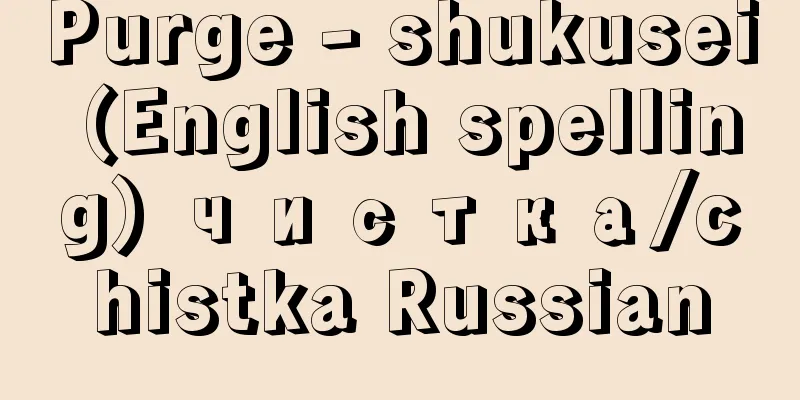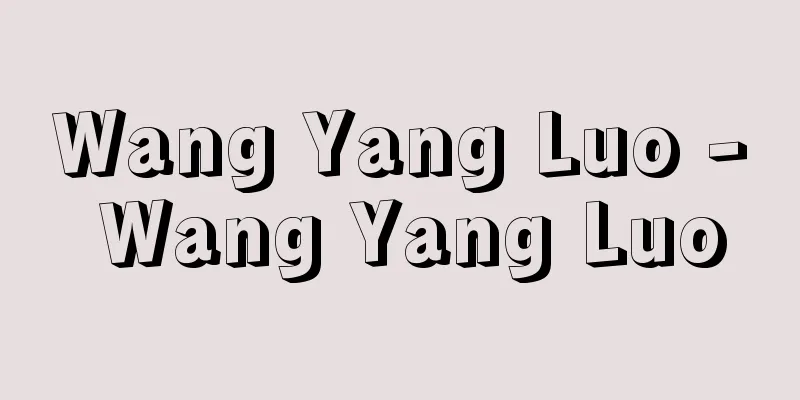Purge - shukusei (English spelling) чистка/chistka Russian

|
The original meaning of this term is the systematic review and expulsion from the party of those who are deemed unsuitable to be Communist Party members. The former Communist Party of the Soviet Union, based on the idea that any party that comes to power will become corrupt and that regular cleansing is necessary, established a system of purges in its party constitution and established special committees several times between 1921 and 1936 to review all party members and expel corrupt elements from the party. However, from the late 1920s when Stalin established leadership of the party, the purge system was used to expel from the party those who were critical of the line that was being followed at the time, which caused confusion, so the system of purges was abolished in a revision of the party constitution in 1939. Since then, in the Soviet Union, the expulsion of corrupt elements has been carried out individually through the normal procedures set out in the party constitution. In Western literature, the term "purging" is used in a different sense. In the former Soviet Union, from the 1920s to the early 1950s, a minority of cadres were dismissed from key positions in the party and government due to disputes over policy and policy. In the 1930s, many cadres were illegally arrested without following the purge procedures stipulated in the party constitution at the time, and many of them were killed. The same situation occurred in some Eastern European countries in the 1950s, which led to the term "bloody purges" being used in Western countries. In China, during the Anti-Rightist Movement in the mid-1950s, many intellectuals critical of Mao Zedong were suppressed, and during the "Great Proletarian Cultural Revolution" from the mid-1960s to the mid-1970s, many anti-Mao cadres were suppressed, and after Mao's death, his close associates were arrested and many Mao cadres within the party were demoted. These cases are also referred to as "purging" in Western literature. In most socialist countries, the past practice of resolving differences within the party through the systematic elimination and oppression of minorities was condemned in the mid-1950s, and such practices have since disappeared, and there are no more purges in the Western sense of the term. However, in the mid-1970s after the Vietnam War, the Workers' Party of Vietnam conducted a campaign to check all party members with the participation of non-party members and expel bad members in order to strengthen the party. This kind of purge in the original sense is also practiced in some other socialist countries. [Tsuneo Inako] [References] | |Source: Shogakukan Encyclopedia Nipponica About Encyclopedia Nipponica Information | Legend |
|
本来の意味は、組織的な点検による共産党員としてふさわしくない者の党からの追放である。旧ソ連共産党は、権力についた党には内部に腐敗がおこるので、定期的な浄化が必要であるという考えにより、党規約に粛清の制度を定め、1921年から36年まで何回か特別委員会をつくって全党員を点検し、党内から腐敗分子を追放する措置をとってきた。しかしスターリンが党の指導権を確立した20年代末から、粛清の制度は、当時の路線に批判的な者を党から追放するために利用され、混乱を招いたので、39年の規約改正で粛清の制度は廃止された。以後ソ連では、腐敗分子の追放は規約の定める通常の手続で個別的に行われていた。 粛清は西側諸国の文献では別の意味でも用いられている。すなわち1920年代から50年代初めまで、旧ソ連では路線、政策をめぐる論争で少数派の幹部が党と政府の要職を解任され、とくに30年代には当時の党規約の定める粛清の手続によらず、多数の幹部が違法に逮捕され、そのなかには殺された者が多く、同じ事態は50年代に若干の東欧諸国でもおき、そのため西側諸国で「血の粛清」ということばが生まれた。中国では50年代なかばの反右派闘争のとき、毛沢東(もうたくとう/マオツォートン)に批判的な多数の知識人が弾圧され、60年代なかばから70年代なかばの「プロレタリア文化大革命」時代には、反毛沢東派の多数の幹部が弾圧され、毛沢東の死後は逆に彼の側近が逮捕され、党内の毛沢東派の多数の幹部が失脚したが、西側諸国の文献ではこれらの例も粛清とよばれている。 大半の社会主義国では1950年代なかばに、党内での意見の違いを少数派の組織的排除と弾圧で解決する過去の実践が非難され、以後このような事態はなくなっており、西側諸国の使う意味での粛清はない。しかしベトナム労働党は、ベトナム戦争後の70年代なかばに、党の強化のため非党員の参加のもとに全党員を点検し、不良党員を追放する運動を行った。このような本来の意味での粛清は、他の若干の社会主義国でも行われている。 [稲子恒夫] [参照項目] | |出典 小学館 日本大百科全書(ニッポニカ)日本大百科全書(ニッポニカ)について 情報 | 凡例 |
<<: Village Guide - Shukuson Taigaicho
Recommend
Kim Pyo Bong
1890‐1961 A Korean nationalist and a united front ...
Davis, H.
… [Electrical conversion of sound waves] Meanwhil...
Okada Lizard - Okada Lizard
...In a broad sense, it refers to reptiles belong...
Banna
Year of death: Around 1207 Year of birth: Unknown....
Ikuchi-san
...The administrative area of Setoda Town inclu...
Davson, H.
…They are usually slightly more protein by weight...
"Money Theory"
...This idea led him to focus on the importance o...
Xie Lingyun - Shareiun
A poet from the Southern Song Dynasty in China. B...
Kiln
A device for melting and heat-treating materials a...
Awards - Shotenroku
The Meiji government bestowed these benefits on m...
Loanable funds theory
A theory of interest rate determination that posi...
Willow Bridge - Yanagibashi
This area is located at the southeastern edge of ...
Manolete (English spelling)
1917‐47 Spanish bullfighter. His real name was Man...
North China Development Co., Ltd.
…In December 1939, the Mengjiang United Autonomou...
linear energy transfer
…It is an abbreviation for linear energy transfer...









